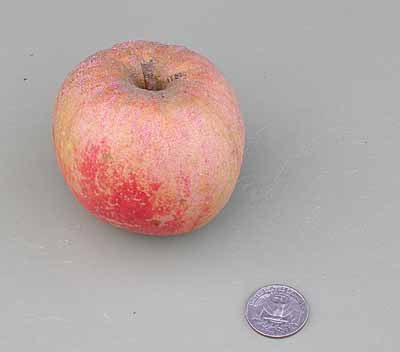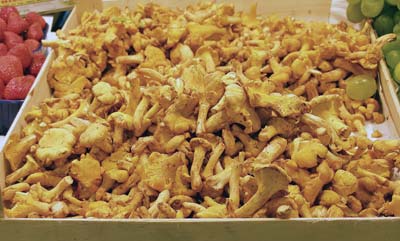
A Dutch name for Belle de Boskoop, a large, irregular and asymmetrical, all-purpose, Dutch apple discovered in 1856 by KJW Ottolander and which was first introduced commercially in the United Kingdom in the 1920s. This outstanding apple has rough, matt, yellowish-green skin, russeted with greyish dark red blush. It has firm, creamy yellow flesh with sharp flavour and is good for tarts and charlottes as it retains its shape during cooking. It is a late-season variety, picked from early October in South-East England, is stored and is at its best between October and April. It retains its shape on cooking so is good in pies and tarts, but also makes good purée.

Grey chanterelles. Fluted, trumpet-shaped, wild mushrooms with a ruffled edge, dark grey to black in colour. They are commonly found under pine, beech or birch trees from July until the first frosts and thrive in wet summers. They are usually sautéed in butter with chopped onions, but are not considered as tasty as the horn of plenty, which they resemble.
Grey gurnard, the most common of the gurnards. Gurnards are strange-looking, bottom-feeding fish which use the three bottom rays of their pectoral fins to "feel" the sea bed. They have firm-textured white meat with not much flavour. They are rich in protein, iodine and phosphorus. The grey gurnard has a brownish-grey back and silver belly and all gurnards are very bony fish. Small ones are excellent in soup. Red or grey mullet (US: striped mullet) can generally be subsituted for it, and are usually better.
Greek salad. In Greece this would be roughly cut cucumber mixed with chunks of tomato, a few onion rings scattered over the top, a little oregano, a few olives, some cubes of Feta cheese and some olive oil.